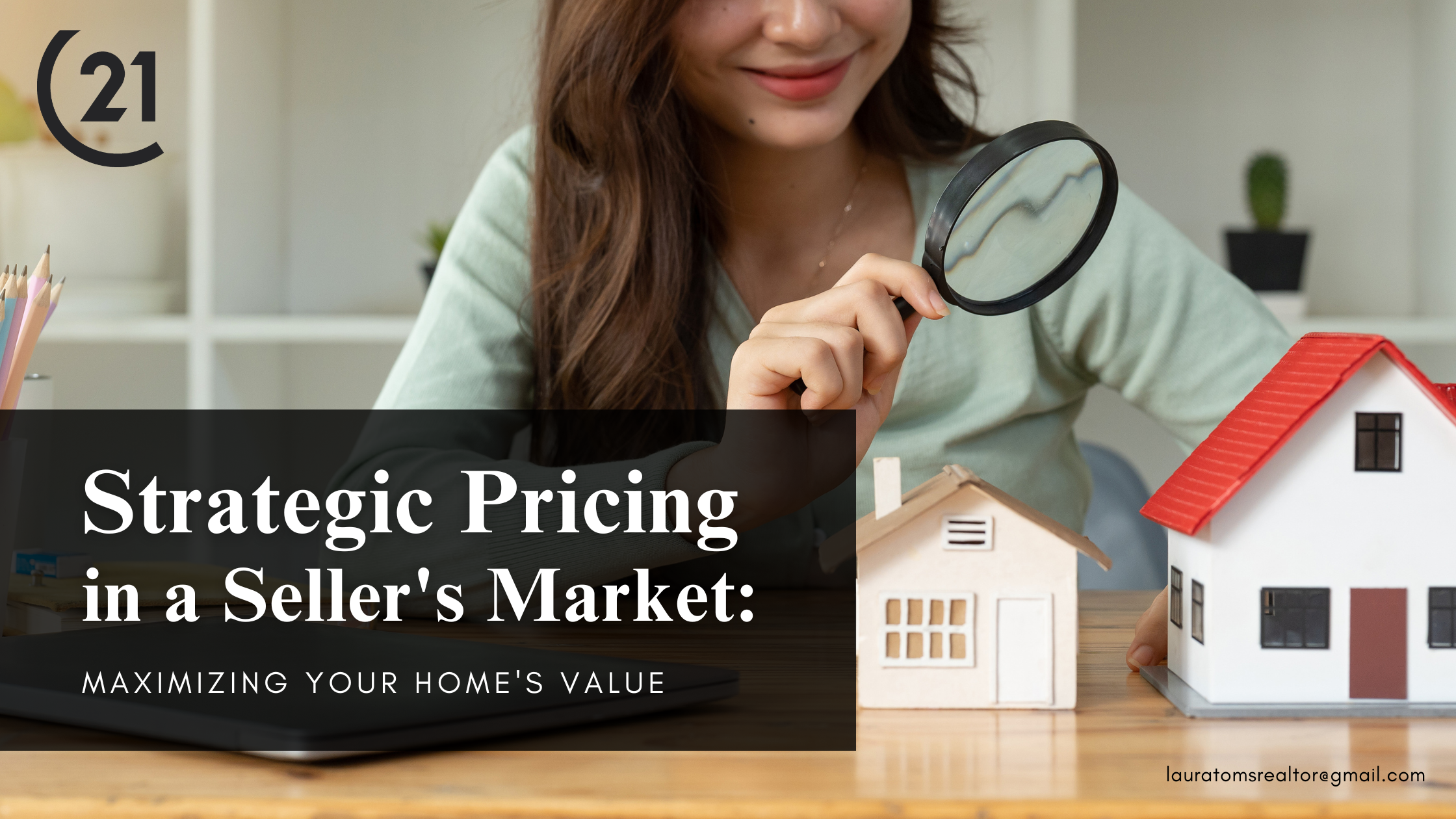
In today’s real estate landscape, where demand often outstrips supply, setting the right price for your home can be the difference between a quick sale at top dollar and lingering on the market. Join us as we delve into the art and science of strategic pricing, equipping you with the tools to optimize your home’s value and secure the best deal possible.
Firstly, let’s establish a fundamental principle: pricing in a seller’s market is about more than just picking a number out of thin air. It’s a strategic game that requires careful consideration of various factors, including market trends, comparable properties, and the unique attributes of your home. So, buckle up and let’s dive into the steps to determine the optimal listing price for your property.
Step 1: Know Thy Market
Understanding the dynamics of the local market is paramount. Research recent sales data, inventory levels, and trends in your neighborhood or area. Is it a hot market with bidding wars driving prices up, or are properties sitting for weeks with little movement? This knowledge will inform your pricing strategy.
Step 2: Analyze Comparable Properties
Ah, the trusty Comparative Market Analysis (CMA). This tool is your best friend when it comes to setting the right price. Look for properties similar to yours in terms of size, location, age, and amenities. Pay close attention to the sold prices, but also consider the listing prices of homes currently on the market – these are your competition.
Step 3: Factor in Your Home’s Unique Features
Your home is special, and its value isn’t solely dictated by square footage and number of bedrooms. Consider any upgrades, renovations, or standout features that set your property apart from the rest. A gourmet kitchen, a lush backyard oasis, or a stunning view can all justify a higher price tag.
Step 4: Consult with Real Estate Professionals
Don’t underestimate the value of expert advice. A seasoned real estate agent can provide invaluable insights into market conditions and help you fine-tune your pricing strategy. They have their finger on the pulse of the market and can guide you towards a price that maximizes your home’s value while remaining attractive to buyers.
Step 5: Price Strategically, Not Emotionally
It’s natural to have an emotional attachment to your home, but pricing based on sentimental value can backfire. Be objective and realistic about your home’s worth in the current market. Pricing too high can deter potential buyers, while pricing too low may leave money on the table. Aim for a price that is competitive yet reflective of your home’s true value.
Step 6: Leave Room for Negotiation
In a seller’s market, you may be tempted to set a sky-high price and wait for the offers to roll in. However, it’s essential to leave some wiggle room for negotiation. Buyers still want to feel like they’re getting a good deal, so consider pricing slightly above your target to allow for bargaining without undercutting your bottom line.
Step 7: Monitor and Adjust as Needed
The real estate market is fluid, and pricing strategies may need to evolve over time. Keep a close eye on market conditions, feedback from potential buyers, and any changes in competing properties. If your home isn’t generating the interest you’d hoped for, don’t be afraid to adjust the price accordingly.
In conclusion, strategic pricing in a seller’s market is a delicate balancing act that requires careful research, analysis, and a dash of intuition. By leveraging market data, understanding your home’s unique value proposition, and working closely with real estate professionals, you can set a listing price that attracts buyers and maximizes your home’s value. So, take your time, do your homework, and get ready to secure the best deal possible for your prized property. Happy selling!


 Facebook
Facebook
 X
X
 Pinterest
Pinterest
 Copy Link
Copy Link

